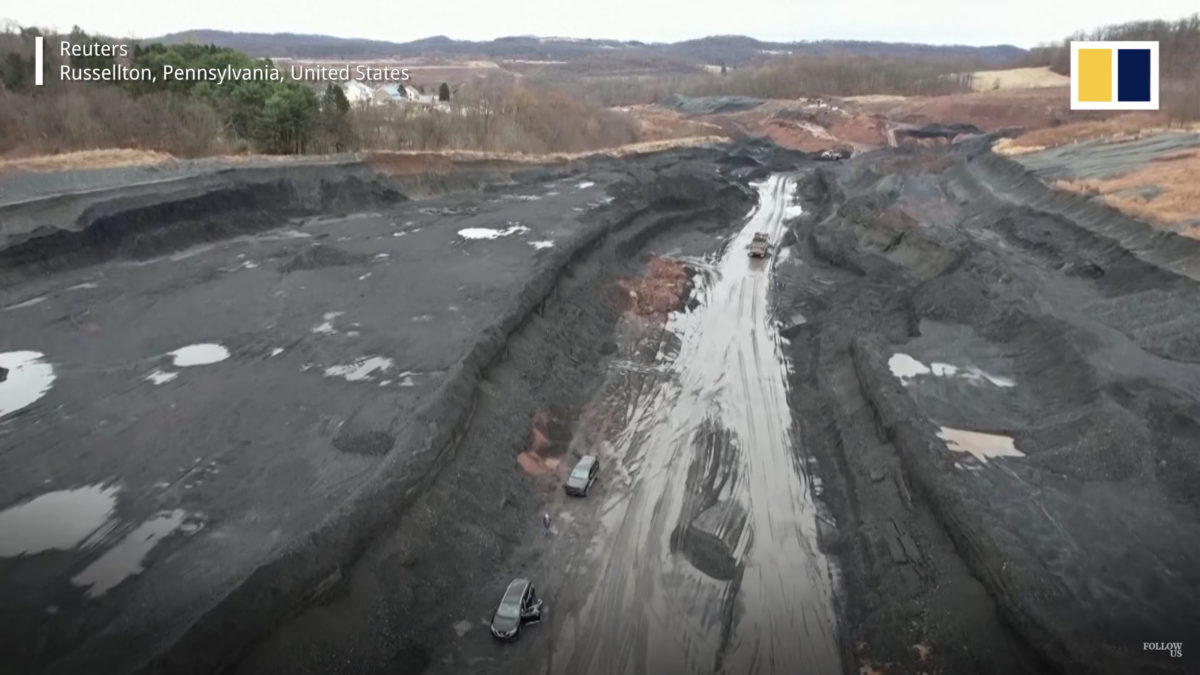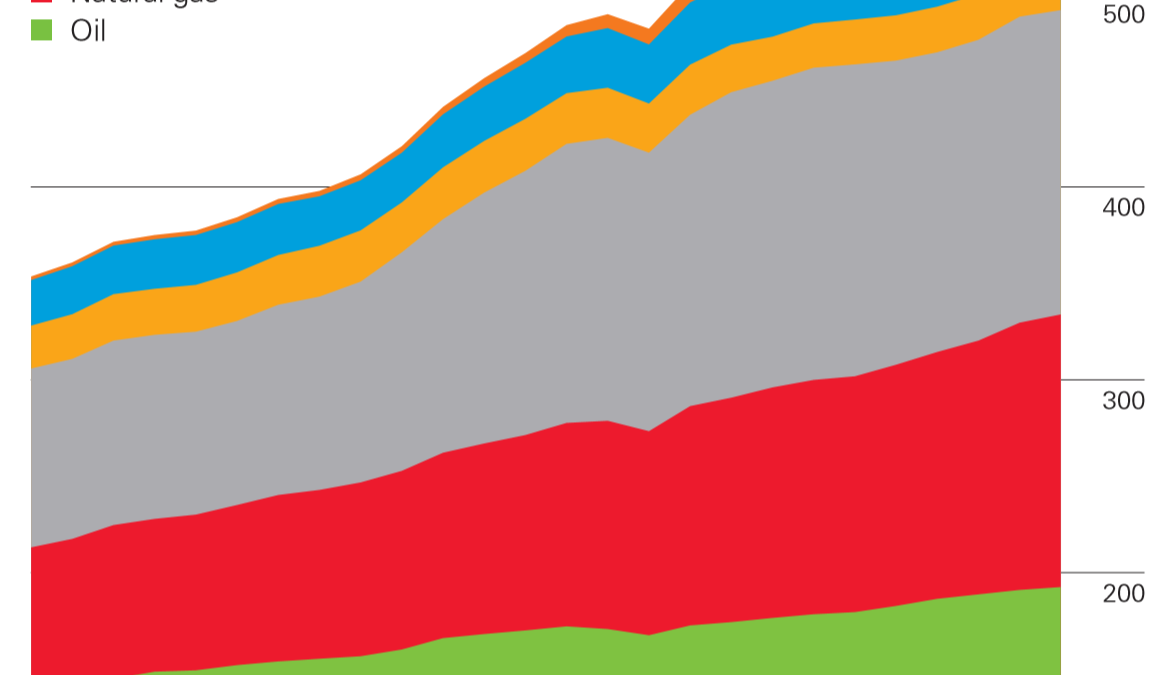Deep ocean currents around Antarctica headed for collapse – “Such profound changes to the ocean’s overturning of heat, freshwater, oxygen, carbon, and nutrients will have a significant adverse impact on the oceans for centuries to come”

By Kathy Gunn, Matthew England, and Steve Rintoul
25 May 2023
(The Conversation) – Antarctica sets the stage for the world’s greatest waterfall. The action takes place beneath the surface of the ocean. Here, trillions of tonnes of cold, dense, oxygen-rich water cascade off the continental shelf and sink to great depths. This Antarctic “bottom water” then spreads north along the sea floor in deep ocean currents, before slowly rising, thousands of kilometres away.
In this way, Antarctica drives a global network of ocean currents called the “overturning circulation” that redistributes heat, carbon and nutrients around the globe. The overturning is crucial to keeping Earth’s climate stable. It’s also the main way oxygen reaches the deep ocean.
But there are signs this circulation is slowing down and it’s happening decades earlier than predicted. This slowdown has the potential to disrupt the connection between the Antarctic coasts and the deep ocean, with profound consequences for Earth’s climate, sea level and marine life.
Our new research, published today in the journal Nature Climate Change, uses real-world observations to decipher how and why the deep ocean around Antarctica has changed over the past three decades. Our measurements show the overturning circulation has slowed by almost a third (30%) and deep ocean oxygen levels are declining. This is happening even earlier than climate models predicted.
We found melting of Antarctic ice is disrupting the formation of Antarctic bottom water. The meltwater makes Antarctic surface waters fresher, less dense, and therefore less likely to sink. This puts the brakes on the overturning circulation.
Why does this matter?
As the flow of bottom water slows, the supply of oxygen to the deep ocean declines. The shrinking oxygen-rich bottom water layer is then replaced by warmer waters that are lower in oxygen, further reducing oxygen levels.
Ocean animals, large and small, respond to even small changes in oxygen. Deep-ocean animals are adapted to low oxygen conditions but still have to breathe. Losses of oxygen may cause them to seek refuge in other regions or adapt their behaviour. Models suggest we are locked in to a contraction of the “viable” environment available to these animals with an expected decline of up to 25%.
Slowdown of the overturning may also intensify global warming. The overturning circulation carries carbon dioxide and heat to the deep ocean, where it is stored and hidden from the atmosphere. As the ocean storage capacity is reduced, more carbon dioxide and heat are left in the atmosphere. This feedback accelerates global warming.
Reductions in the amount of Antarctic bottom water reaching the ocean floor also increases sea levels because the warmer water that replaces it takes up more space (thermal expansion). [more]
Antarctic alarm bells: observations reveal deep ocean currents are slowing earlier than predicted
Recent reduced abyssal overturning and ventilation in the Australian Antarctic Basin
ABSTRACT: Dense water formed near Antarctica, known as Antarctic bottom water (AABW), drives deep ocean circulation and supplies oxygen to the abyssal ocean. Observations show that AABW has freshened and contracted since the 1960s, yet the drivers of these changes and their impact remain uncertain. Here, using observations from the Australian Antarctic Basin, we show that AABW transport reduced by 4.0 Sv between 1994 and 2009, during a period of strong freshening on the continental shelf. An increase in shelf water salinity between 2009 and 2018, previously linked to transient climate variability, drove a partial recovery (2.2 Sv) of AABW transport. Over the full period (1994 to 2017), the net slowdown of −0.8 ± 0.5 Sv decade−1 thinned well-oxygenated layers, driving deoxygenation of −3 ± 2 μmol kg−1 decade−1. These findings demonstrate that freshening of Antarctic shelf waters weakens the lower limb of the abyssal overturning circulation and reduces deep ocean oxygen content.
Recent reduced abyssal overturning and ventilation in the Australian Antarctic Basin

Deep ocean currents around Antarctica headed for collapse, study finds
By Melissa Lyne
30 March 2023
(UNSW Sydney) – The deep ocean circulation that forms around Antarctica could be headed for collapse, say scientists.
Such a decline would stagnate the bottom of the oceans and affect climate and marine ecosystems for centuries to come.
The results are detailed in a new study coordinated by Scientia Professor Matthew England, Deputy Director of the ARC Centre for Excellence in Antarctic Science (ACEAS) at UNSW Sydney. The work, published today in Nature, includes lead author Dr Qian Li – formerly from UNSW and now at the Massachusetts Institute of Technology (MIT) – as well as co-authors from the Australian National University (ANU) and CSIRO.
Cold water that sinks near Antarctica drives the deepest flow of the overturning circulation – a network of currents that spans the world’s oceans. The overturning carries heat, carbon, oxygen and nutrients around the globe. This influences climate, sea level and the productivity of marine ecosystems.
“Our modelling shows that if global carbon emissions continue at the current rate, then the Antarctic overturning will slow by more than 40 per cent in the next 30 years – and on a trajectory that looks headed towards collapse,” says Prof England.
Modelling the deep ocean
About 250 trillion tonnes of cold, salty, oxygen-rich water sinks near Antarctica each year. This water then spreads northwards and carries oxygen into the deep Indian, Pacific and Atlantic Oceans.
“If the oceans had lungs, this would be one of them,” Prof England says.
The international team of scientists modelled the amount of Antarctic deep water produced under the IPCC ‘high emissions scenario’, until 2050.
The model captures detail of ocean processes that previous models haven’t been able to, including how predictions for meltwater from ice might influence the circulation.
This deep ocean current has remained in a relatively stable state for thousands of years, but with increasing greenhouse gas emissions, Antarctic overturning is predicted to slow down significantly over the next few decades.
Impacts of reduced Antarctic overturning
With a collapse of this deep ocean current, the oceans below 4000 metres would stagnate.
“This would trap nutrients in the deep ocean, reducing the nutrients available to support marine life near the ocean surface,” says Prof England.
Co-author Dr Steve Rintoul of CSIRO and the Australian Antarctic Program Partnership says the model simulations show a slowing of the overturning, which then leads to rapid warming of the deep ocean.
“Direct measurements confirm that warming of the deep ocean is indeed already underway,” says Dr Rintoul.
The study found melting ice around Antarctica makes the nearby ocean waters less dense, which slows the Antarctic overturning circulation. The melt of the Antarctic and Greenland ice sheets is expected to continue to accelerate as the planet warms.
“Our study shows that the melting of the ice sheets has a dramatic impact on the overturning circulation that regulates Earth’s climate,” says Dr Adele Morrison, also from ACEAS and the ANU Research School of Earth Sciences.
“We are talking about the possible long-term extinction of an iconic water mass,” says Prof England.
“Such profound changes to the ocean’s overturning of heat, freshwater, oxygen, carbon and nutrients will have a significant adverse impact on the oceans for centuries to come.”
Deep ocean currents around Antarctica headed for collapse, study finds
Abyssal ocean overturning slowdown and warming driven by Antarctic meltwater
ABSTRACT: The abyssal ocean circulation is a key component of the global meridional overturning circulation, cycling heat, carbon, oxygen and nutrients throughout the world ocean1,2. The strongest historical trend observed in the abyssal ocean is warming at high southern latitudes2,3,4, yet it is unclear what processes have driven this warming, and whether this warming is linked to a slowdown in the ocean’s overturning circulation. Furthermore, attributing change to specific drivers is difficult owing to limited measurements, and because coupled climate models exhibit biases in the region5,6,7. In addition, future change remains uncertain, with the latest coordinated climate model projections not accounting for dynamic ice-sheet melt. Here we use a transient forced high-resolution coupled ocean–sea-ice model to show that under a high-emissions scenario, abyssal warming is set to accelerate over the next 30 years. We find that meltwater input around Antarctica drives a contraction of Antarctic Bottom Water (AABW), opening a pathway that allows warm Circumpolar Deep Water greater access to the continental shelf. The reduction in AABW formation results in warming and ageing of the abyssal ocean, consistent with recent measurements. In contrast, projected wind and thermal forcing has little impact on the properties, age and volume of AABW. These results highlight the critical importance of Antarctic meltwater in setting the abyssal ocean overturning, with implications for global ocean biogeochemistry and climate that could last for centuries.
Abyssal ocean overturning slowdown and warming driven by Antarctic meltwater


